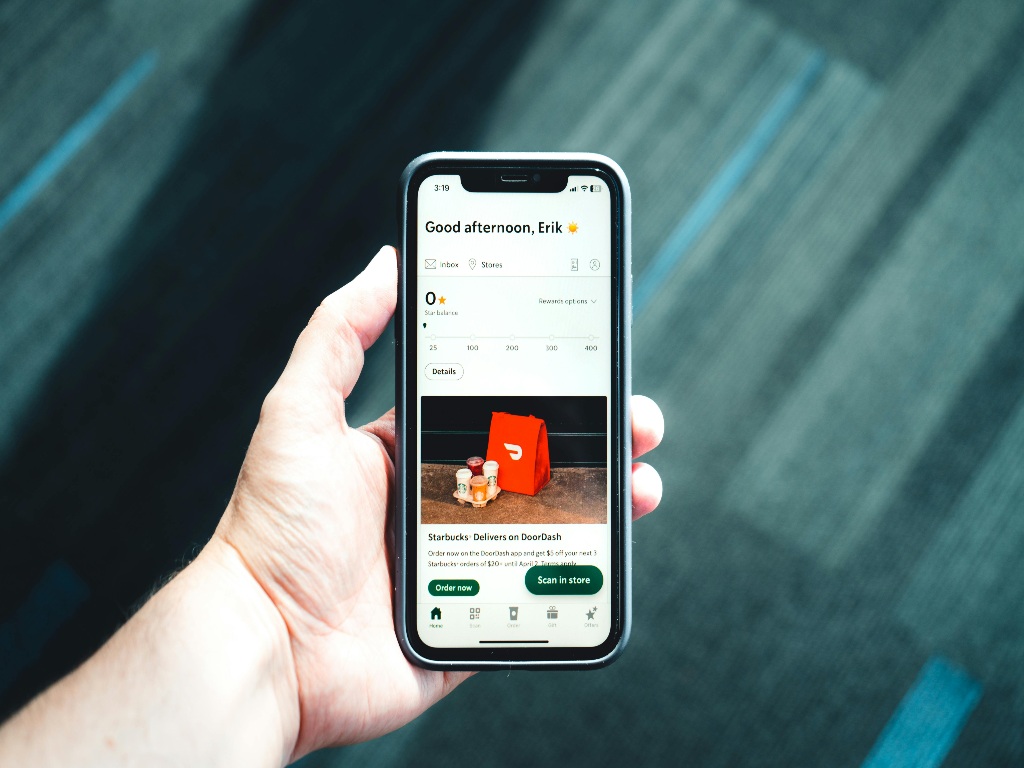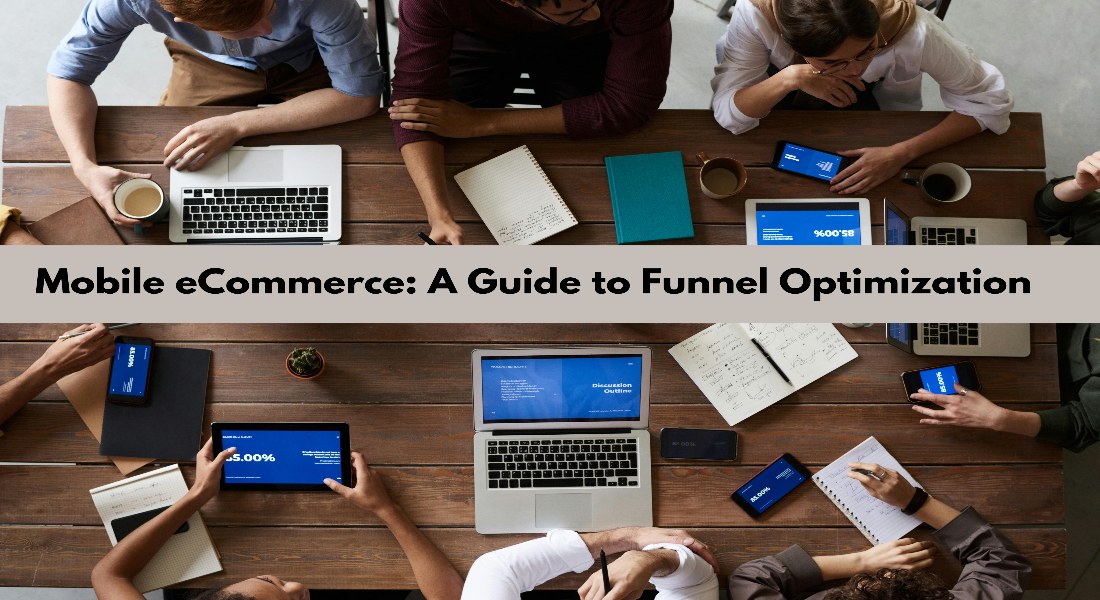According to research by Outerboxdesign, nearly 89% of smartphone owners have made an online purchase within the past six months.
That means the number of users of mobile eCommerce is increasing, and the business person who used to think eCommerce customers only use desktops should drop their thought.
The need to optimize the mobile eCommerce funnel has grown substantially as the number of customers using smartphones to shop online continues to rise. Merchants must optimize the mobile eCommerce conversion funnel, which consists of actions that lead customers to purchase without any hassle because of the rapid growth of mobile eCommerce.
In this article, we will talk about the mobile eCommerce conversion funnel and its optimization strategies.
What is An eCommerce Conversion Funnel?
In online retail, the term “conversion funnel” refers to a particular type of consumer journey. It outlines visitors’ journey from first exposure to the product or service to a final purchase decision.
Online stores can only guarantee a sale to some of their visitors because it is only possible for some visitors to a website to be converted into loyal customers. This is why the shape of the eCommerce sales funnel resembles a cone. The broad top of the funnel depicts a large number of site visitors. As you go down the funnel, you will see that only a tiny fraction of your visitors convert into paying customers.
A conversion funnel model helps you think about your online customers by targeting your marketing to different customer journey stages. For example, a conversion funnel can help you understand who your actual customers are and which ones are your prospects.
Minimizing the gap between the top and bottom of the sales funnel and maximizing the number of people who convert should be the primary objectives of any online store.
Maximize Your Mobile eCommerce Conversion Funnel: 7 Proven Strategies

Optimizing mobile conversion is also essential at the lower stages of the shopping funnel.
At the window shopper, shopper, and buyer stages of the e-commerce funnel, merchants at the lower levels need to include activities such as add to cart, pre-checkout, shipping, and payment options. It is crucial to focus on these lower funnel stages to increase earnings.
Strategy 1: Streamlining the Total Customer Experience to Increase Mobile Conversions
Businesses frequently need help to grasp the significance of mobile optimization for the lower steps of the customer journey. Consumers are usually taken care of on mobile platforms when browsing and exploring products. Still, they sometimes need to be noticed when adding items to a basket, going to checkout, choosing shipping options, and allowing secure payment methods.
The focus must be on these lower phases of the customer journey to maximize profitability and improve the user experience overall. Businesses may enhance their income, decrease cart abandonment, and improve conversion rates by ensuring mobile users have a smooth and effortless experience during the buying process.
To support this, apps like SearchPie can help improve mobile performance from the very beginning by optimizing page speed, mobile SEO, and structured data – laying the groundwork for a seamless mobile experience that drives conversions.
In 2024, eCommerce websites typically achieve a conversion rate of 2.86%. Compared to the worldwide average of 4.31%, the average conversion rate for US-based eCommerce websites is 2.63%.
But how can eCommerce optimize its conversion funnel for mobile users?
For example- a clothes store could provide a user-friendly and aesthetically pleasing smartphone app for perusing and finding items. Mobile users may not complete their transactions as intended if they encounter difficulties or issues when adding items to the cart, entering shipping information, or paying. To boost customer satisfaction and conversions, firms should focus on improving the lower-level steps of the customer journey so that clients have a consistent and efficient mobile experience.
Strategy 2: Improving CPC Earnings by Making Cart Total Visible
It is standard practice for online stores to show the total amount in the cart on the main page or in the navigation bar. However, showing it all in money units could not grab the visitor’s attention enough, which could lead to unpleasant surprises when they go to pay. To combat this, companies can think of ways to make the cart total more eye-catching, including showing the quantity of items next to the total price. One way to apply this strategy is to show the total value and number of items under the cart icon or button in the header or navigation bar.
One online store may use “3 Items – $75.00” to advertise their products rather than simply “$75.00” in the header.
By keeping the contents and total cost of their carts displayed, this technique helps visitors avoid any unpleasant shocks when they are checking out. Businesses may improve transparency and inform visitors throughout their buying trip by showing the cart total prominently. More satisfied customers, fewer abandoned carts, and more money each visitor makes are all possible outcomes of this strategy.
The tactic can work wonders for companies who provide discounts, bundles, or dynamic pricing depending on the goods in the customer’s basket. Website visitors may confidently complete their transactions when the cart total is displayed clearly and prominently.
Strategy 3: Eliminating Difficulties During the Checkout Process
There is a strong correlation between the ability to concentrate and the amount of money made per visitor throughout the crucial checkout and cart phases. Some companies disable non-essential features, such as live chat or support popups, on certain pages to ensure customers have a smooth and easy buying experience.
On the checkout and cart pages, interactive features like chat choices could inadvertently distract clients from the main objective of finishing their purchases. Revenue can take a hit due to higher cart abandonment rates and reduced conversion rates.
Businesses can create an environment free of distractions that encourages customers to focus entirely on finalizing their transactions by temporarily blocking these elements during checkout. Customers using mobile devices to browse the website will significantly benefit from this strategy, as even little distractions will dramatically impact the smaller screen.
If a clothes store wants its consumers to be able to buy things without distractions, it can disable their live chat widget on the basket and checkout pages. Nevertheless, the company can ensure that important details and resources are still available by using other methods, including prominent links or contact information on these pages.
Experts in the field claim that this tactic, when put into play, can significantly enhance RPV, especially for mobile users. The example shows that one company’s RPV increased by 15.22% after enabling distractions on mobile platforms.
Businesses may improve customer experience, decrease annoyance, and increase conversion rates and revenue per visitor by simplifying the checkout process and minimizing distractions. Furthermore, this method aligns with user experience design principles, which state that increasing customer happiness and loyalty can be as simple as reducing cognitive load and making the path to desired behaviors crystal clear.
Strategy 4: Efficient Default Shipping Options for a Simplified Checkout
Businesses should consider introducing intelligent default shipping options to improve the checkout process and eliminate possible friction points. Using data like the customer’s location, order value, and previous choices, this strategy will automatically choose the best shipping method. Companies can save time and lessen the mental strain on consumers by eliminating the need to select a shipping method each time they check out. Customers should be able to change the pre-selected delivery choice if they want to so they can keep control of their purchase decisions.
By combining client location data with purchase value, an online bookstore, for example, may choose the default shipping option to be the most cost-effective and time-efficient. Customers who usually use the suggested delivery method will find this strategy easy to use, and if their preferences or circumstances change, they can easily switch to another option.
To further personalize and speed up the checkout process for repeat customers, a consumer electronics retailer may use past customer data to pre-select the shipping method most often picked by a given customer.
This tactic can boost conversion rates and RPV for companies who employ it. Industry research shows that clever default shipping options can have a good impact, with one company seeing a 2.08% rise in RPV after using them.
Customers are more likely to be satisfied and less likely to abandon their carts when the checkout process is simplified by removing extra stages or choices. Consumers are more likely to be loyal to a brand and make additional purchases after an easy and quick checkout process.
Strategy 5: Allow Guests to Check Out
If consumers are compelled to sign up for an account, they are more inclined to leave an online store altogether. Customers who have already decided to purchase a product are often in a hurry, leaving business owners with limited time and significantly less space for mistakes.
A guest checkout option allays customers’ fears of being inundated with unwanted information and speeds up first-time purchases. It may be more reasonable not to require permanent registration from all visitors and instead offer different checkout alternatives such as new customers, repeat customers, or guest checkout. Think about your customers and the benefits and drawbacks of having them sign up before making a decision.
Strategy 6: Gain Interest in Engaging and Practical Material
Attract new subscribers and clients with engaging and informative content. Communicate with them with interesting blog entries, newsletters, and comprehensive guides that feature eye-catching language and stunning images. Brand recognition, professionalism, and conversion rates can all be enhanced with well-designed web layouts, imaginative product pages, and straightforward instructions. Positive reviews, social media posts, and other user-generated material can significantly impact even more than standard marketing tools like newsletters, blogs, and discounts.
A happy, actual customer speaks volumes about a company’s reliability. Positive word-of-mouth about your product is free and highly effective social evidence. In a compelling fitness newsletter, for instance, you could find a time-sensitive discount coupon, a comprehensive training plan with video demonstrations, testimonials from satisfied customers together with before and after photographs, and a catchy title. The secret is to use the power of genuine user experiences while providing valuable, aesthetically pleasing material that connects.
Strategy 7: Build Trust with Personalized Follow-Up Communications
Customer retention is critical, so offer them the opportunity to sign up for newsletters and follow your social media feeds to encourage repeat purchases. Send coupon vouchers or discounts via email to facilitate future purchases.
Make sure they remember you, including personalized remarks or any aftercare advice they may require in the product package or a subsequent email. Simple order confirmations can also help to develop trust and provide the projected delivery date, pricing breakdown returns policy, and contact information. This reassures consumers and establishes the foundation for repeat business without assaulting them with upsells or new prospects.
Ensure subscribers are not overwhelmed by too many emails and advertising activities since this might harm your brand’s image and drive away clients. Strike the correct mix between valuable content and relevant promotions to foster long-term consumer connections.
Bottom Line
It would be best if you optimized your mobile eCommerce funnel to attract today’s mobile-first consumers. More people will become paying customers if you make your mobile shopping experience easy and intuitive using the tactics described in this article.
